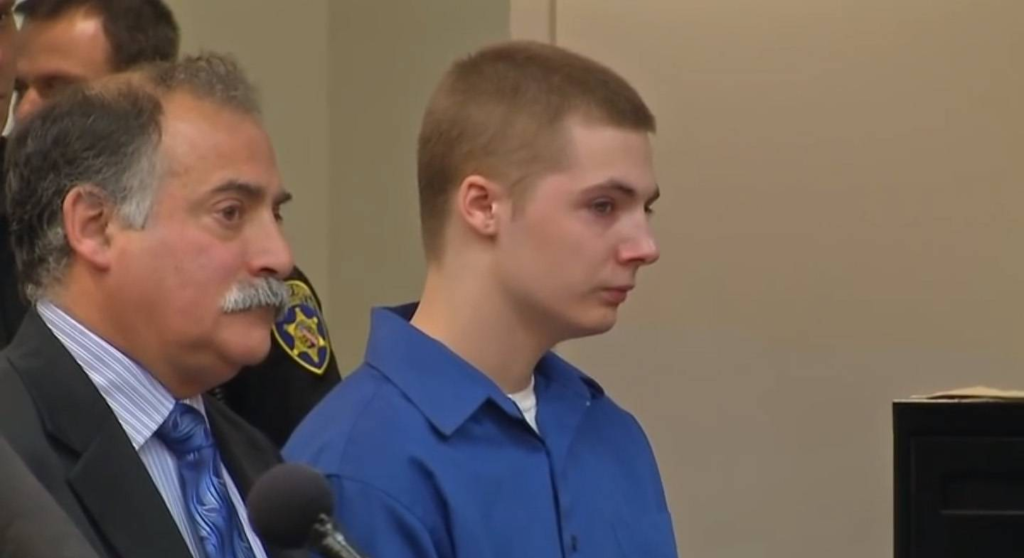- Introduction to the Dylan Schumaker Case
- The Tragic Incident: What Happened?
- Dylan Schumaker’s Background and Profile
- The Legal Battle: Trial and Sentencing
- Public Reaction and Societal Impact
- Analysis of the Legal Proceedings
- The Aftermath: Life After the Sentence for Dylan Schumaker
- Frequently Asked Questions (FAQs) About the Dylan Schumaker Case
Introduction to the Dylan Schumaker Case
In a quiet town, a heartbreaking event unfolded that captured the attention of many across the country. Dylan Schumaker, a teenager, found himself in the midst of a legal storm after being accused and later convicted of the brutal murder of a toddler. This case is not just a story about a crime but also about the lives changed forever by a moment’s action. It sheds light on the complexities of the legal system, the delicate nature of childcare, and the profound impacts of one’s environment on their behavior.
The incident involving Dylan Schumaker brings up difficult questions about youth, responsibility, and the extent of punishment. It also opens up discussions on how society handles young offenders who commit serious crimes. This case serves as a crucial point of reference for legal experts, psychologists, and the general public in understanding and preventing such tragedies.
As we delve into the details of this case, it’s important to remember the sensitivity surrounding the events. The loss of a young life is at the forefront, making it essential to approach the discussion with care and respect for all parties involved.
The Tragic Incident: What Happened?
On a day that seemed like any other, the unimaginable happened. Dylan Schumaker was left in charge of a toddler, a responsibility that ended in tragedy. The details of the day’s events are heart-wrenching, with the young life of a toddler ending too soon. Authorities were alerted, and soon after, Dylan Schumaker found himself facing charges that would alter the course of his life.
The evidence presented in court painted a grim picture of the circumstances leading to the toddler’s death. Witnesses, forensic analysis, and emotional testimonies contributed to the case, highlighting the severity of the actions taken by Schumaker. The public and media quickly latched onto the story, with opinions forming about the teen’s guilt and the nature of the crime.
Dylan Schumaker’s Background and Profile
Dylan Schumaker’s life before the incident was not widely known until the case thrust him into the public eye. Like many teenagers, he had dreams, challenges, and a life that was complex in its ordinariness. Yet, underlying issues came to light during the trial, including aspects of his family life, his mental health, and his history of interactions with both peers and authorities. This background provides a nuanced view of the teenager, suggesting that his actions cannot be understood in isolation from his environment and personal struggles.
The relationship between Dylan and the toddler, as well as with the toddler’s family, was scrutinized during the trial. It raised questions about the responsibility placed on young individuals in caretaking roles and the support systems in place for them. Understanding Dylan’s background is crucial not to excuse his actions but to comprehend the multifaceted factors that can lead a young person down a tragic path. This case highlights the need for vigilant support and intervention for at-risk youth before irreversible decisions are made.
The Legal Battle: Trial and Sentencing
The trial of Dylan Schumaker was a focal point for legal experts, the media, and the public. It brought to the forefront the legal processes involved in charging and sentencing young offenders in severe crimes. Throughout the trial, the prosecution and defense presented their arguments, painting different pictures of Dylan’s intent and the circumstances that led to the toddler’s death. Key moments included emotional testimonies and the presentation of forensic evidence, which played a significant role in the jury’s decision.
Dylan’s sentencing was a moment of intense emotion and legal significance. The decision to sentence him to life in prison sparked debates on the treatment of juveniles within the legal system. It raised ethical questions about the capacity for change and rehabilitation in young offenders and the appropriate level of punishment for crimes of such gravity. This case became a reference point in discussions about juvenile justice, the possibility of redemption, and the societal obligation to both punish and rehabilitate.

Public Reaction and Societal Impact
The public reaction to the case of Dylan Schumaker was mixed, with some expressing outrage over the crime and others sympathizing with the teen’s situation. The case ignited discussions on social media, in community meetings, and even in legislative halls, about how society should deal with young offenders who commit serious crimes. The divide in public opinion reflected broader societal debates on justice, punishment, and the potential for rehabilitation.
The societal impact of the case extended beyond the immediate reactions. It prompted discussions about child protection laws, the role of caregivers, and the support systems available for families and individuals in crisis. The tragedy became a case study in what can happen when the community and systems fail to protect their most vulnerable members. It also sparked conversations about the media’s role in shaping public perception of criminal cases and the individuals involved.
Analysis of the Legal Proceedings
The legal proceedings in Dylan Schumaker’s case were meticulously analyzed by legal scholars and practitioners. They examined the strategies employed by both the defense and prosecution, the application of the law, and the outcome of the trial. This analysis revealed insights into the challenges of prosecuting juvenile offenders and the complexities of cases involving serious crimes by young individuals. The trial also highlighted the role of psychological and sociological evidence in shaping legal outcomes, underscoring the multidisciplinary nature of modern legal battles.
Comparisons with similar cases provided context and raised questions about consistency and fairness in the legal system’s treatment of juveniles. The ethical considerations surrounding the sentencing of young offenders to life in prison became a topic of extensive debate. This discourse contributed to ongoing discussions about legal reforms, particularly concerning the juvenile justice system and its approach to rehabilitation versus punishment.
The Aftermath: Life After the Sentence for Dylan Schumaker
Life after sentencing for Dylan Schumaker has been marked by the realities of prison life and the ongoing psychological impact of his actions and punishment. Reports from within the prison system give insight into his day-to-day life, the challenges faced by young inmates, and the programs aimed at rehabilitation. Yet, the possibility of parole seems distant, with the length of the sentence reflecting the gravity of the crime and societal demands for justice.
The psychological impact of incarceration on young offenders like Schumaker is profound. Studies and reports highlight the need for targeted mental health support and rehabilitation programs within the prison system. These programs aim to address the underlying issues that contribute to criminal behavior and to prepare inmates for eventual reintegration into society, even if that possibility is many years away.
Conclusion
The case of Dylan Schumaker is a tragedy that has left lasting impressions on the community, the legal system, and all who have followed the story. It serves as a somber reminder of the fragility of life, the profound impact of one’s actions, and the complex interplay between individual responsibility and societal factors. As the community moves forward, the lessons learned from this case will continue to influence discussions on justice, rehabilitation, and the protection of the most vulnerable members of society.
Frequently Asked Questions (FAQs) About the Dylan Schumaker Case
1. Who is Dylan Schumaker?
Dylan Schumaker is a teenager who was sentenced to life in prison for the brutal murder of a toddler. His case has drawn significant attention due to the severity of the crime and his young age at the time of the incident.
2. What was the crime Dylan Schumaker was convicted of?
Dylan Schumaker was convicted of the murder of a toddler, whom he was responsible for caring for at the time of the incident. The case was notable for its brutality and the young age of both the perpetrator and the victim.
3. How old was Dylan Schumaker when the crime occurred?
Details regarding Dylan Schumaker’s exact age at the time of the crime are specific to the case; however, he was referred to as a teenager, which indicates he was between 13 and 19 years old.
4. What was the outcome of the trial?
Dylan Schumaker was found guilty of murder and sentenced to life in prison. The trial highlighted numerous aspects of the juvenile justice system and the sentencing of young offenders to severe penalties.
5. Why has the case garnered so much attention?
The case has attracted widespread attention due to the age of the offender, the severity of the crime, and the broader questions it raises about the juvenile justice system, punishment, and rehabilitation.
6. Are there any discussions about reform in the juvenile justice system because of this case?
Yes, the case has sparked discussions and debates about the need for reform in the juvenile justice system, particularly regarding how young offenders are sentenced and the opportunities for rehabilitation.
7. Can Dylan Schumaker appeal his sentence?
In general, individuals convicted of a crime have the right to appeal their sentence, although the specifics of Dylan Schumaker’s case and his ability to appeal would depend on the legal proceedings and the jurisdiction in which he was tried.
8. What lessons can society learn from the Dylan Schumaker case?
The case highlights the importance of early intervention in the lives of at-risk youth, the complexities of the juvenile justice system, and the need for balanced approaches that consider both punishment and rehabilitation.
9. How has the victim’s family coped with the tragedy?
While specific details about the victim’s family are private, the case underscores the devastating impact of violent crime on families and the importance of support systems for those grieving the loss of a loved one.

